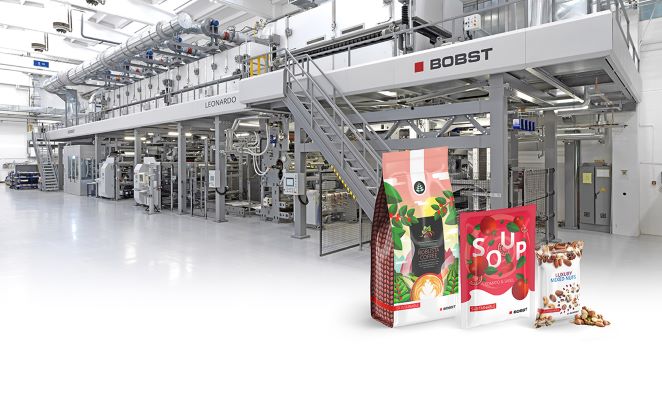The pivotal point of all packaging industry innovation is sustainability. All stakeholders across the entire packaging supply chain understand the only way to future-proof our industry is to embrace integrating responsibility at every stage.
But sustainability is not just about protecting the livelihoods of people in packaging—everyone relies on packaging whether they know it or not. Consumers, medical applications, e-commerce, and a myriad of others need packaging to keep products safe, people healthy, and purchases delivered intact. So, sustainability in packaging is about people: people doing the right thing with the skills, experience, and knowledge they developed through working with packaging—from research and development to sales to logistics.
The function of reliable, sophisticated machinery in the packaging industry is a great illustration of that pivotal role.
Results are crucial in this journey too, as brand owners are not willing to compromise on their expected quality. Consumers can be a tricky bunch to please, and brand owners are the closest link to the vote-with-your-feet public that most of us in the packaging industry need to keep happy.
But while consumers can be experts in their own spheres of influence, experts in the packaging industry need to be able to harness our knowledge to help direct those consumers into making smart decisions. Marco Carrara, technology sales director at BOBST North America Inc., understands how being an expert in the flexo packaging industry is its own responsibility when it comes to sustainability.
“Sustainability touches on so many subjects in packaging. The general focus on ‘reducing’ gets a lot of publicity, so reducing waste, reducing water, reducing plastic, these are all certainly important,” he says. “But we can’t just keep using less of everything. We need to be smarter with what we use and how we use it as well as how much we use.”
“Sustainable packaging is not in the future anymore.
—Marco Carrara, technology sales director, BOBST
All packaging must be sustainable.”
Being smarter clearly touches on many subjects, but it is a more accurate way to look at sustainability than simply reducing. Reducing doesn’t adequately address the requirements of the packaging industry; reduction needs to go hand in hand with innovation.
“When we talk about sustainability in flexible packaging, we must remember that whatever the substrate, the printing is the last step in producing that packaging,” says Sara Alexander, marketing and communications manager for flexible packaging at BOBST.
“By looking at different printing speeds, different drying techniques alongside understanding the substrates themselves and the inks being used, we can contribute considerably to the overall environmental performance and footprint of the product.”
Meeting Demand
The BOBST Competence Center in San Giorgio, Italy, works to fast-track solutions for customers across the packaging supply chain. Carrara says customers can go there and see how the center can support their stage in the packaging process.
“Our customers and potential customers know that 2025 is just around the corner,” Carrara says about global sustainability goals. “The changing legislation that is already impacting considerably on key players throughout the supply chain means that brands and converters have to be ready. Sustainable packaging is not in the future anymore. All packaging must be sustainable.”
The idea of all packaging being sustainable in the not-too-distant future is an exciting prospect. Packaging, particularly plastic, going from being demonized to being praised is welcomed, especially when so many highly skilled experts—who are all consumers, parents, and people too—are inspired to contribute to its positive development.
Understanding every stage of the converting process by listening to and learning from the challenges and requirements of customers means the BOBST Competence Center can target the areas of the flexo packaging process that matter.
Taking the already known benefits of reducing ink, working with an extended color gamut, using quick-drying technology that requires less energy, understanding the performance of water-based inks, and delivering accurate amounts of ink all provide advantages from a corporate social responsibility perspective. But when all of these are combined with technologically advanced central impression flexo printing presses, designed to work in tune with the most progressive substrates, then brand owners and converters can be assured that print performance is matched with sustainability.
“We’re proud to be integral to the sustainable future of the flexo packaging industry,” Alexander says. “BOBST can work with different technologies, different substrates, different inks … but what never changes is our focus on sustainability.”
Katie Graham is the regional marketing and communications manager at BOBST.
NOTE TO READERS: We welcome submissions to this sustainability column. Please send your ideas to FlexPackVOICEcontent@theYGSgroup.com. Generally, articles can be up to 1,000 words, should be on issues important to the industry, and should not be self-promotional. Submitted photos will be considered for publication, as well.
